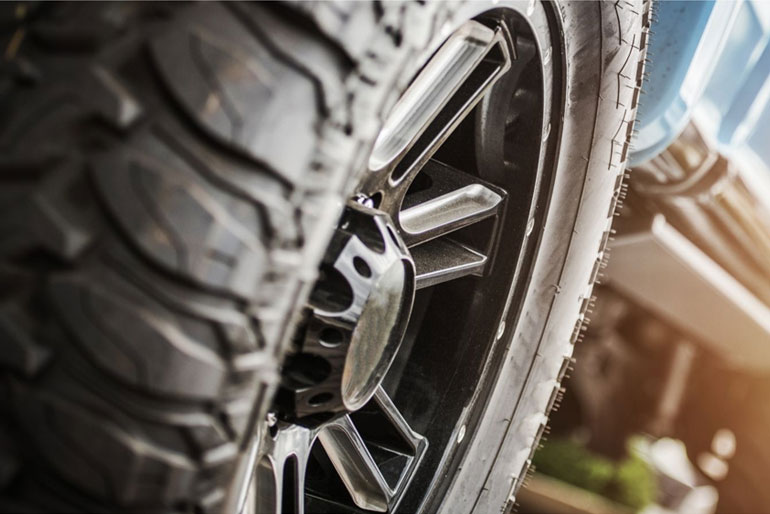Selecting different types of tires for trucks goes beyond aesthetics – it’s a decision that significantly impacts your truck’s performance, safety, and fuel efficiency.
With a myriad of tire options available, it can be overwhelming to find the perfect one.
This guide will bring valuable insights and considerations to help you make an informed choice. Keep scrolling down to see!
Tips To Choose The Right Tire For Your Truck
You should pay attention to the tire type, size, load rating, and tread pattern first. The right size will fit your truck, while the proper type will serve your desired purpose. Meanwhile, load rating determines how much your truck can carry, and tread pattern decides its traction and lifespan.
Understand Your Needs
When it comes to picking the perfect tire for trucks, the journey starts with grasping your unique requirements.
Take into account factors such as the kind of terrain you’ll be navigating and the weather conditions you will encounter, the weight you may be carrying, whether you’ll be towing anything, how you typically drive, the mileage you cover, and finally, your budget.
Tire Size
It’s essential to ensure that the tires you select are correct for your vehicle.
The size of your tires impacts various aspects of your truck’s performance, including its handling, stability, and overall driving experience.
To determine the right size for your car, refer to the information in the owner’s manual or the tire placard on the driver’s side door jamb.
Additionally, you can consult with tire professionals or use online calculators to find the optimal size that aligns with your truck’s specifications.
Tire Type
Various types of tires for your car are available, each designed to excel in certain driving conditions and terrains.
Common tire types include all-season, summer, winter, and all-terrain tires. For example, all-season tires are versatile and suitable for various weather conditions, making them a popular choice for many truck owners.
Summer tires offer enhanced performance in dry and wet conditions, while the winter types are created to provide excellent traction on snow and ice-covered streets.
Furthermore, if you frequently drive off-road or encounter challenging road maps, all-terrain tires might be the ideal option.
Tread Pattern
Tread patterns are designed to provide traction, stability, and control on various road surfaces. There are three main tread patterns to consider:
- Symmetrical or highway tread: These tires have a balanced and consistent tread pattern, which ensures a smooth and quiet ride with good traction on dry and wet roads
- Directional tread: These tires have a V-shaped pattern that channels water away from the center of the tire, decreasing the risk of hydroplaning on difficult terrains.
- All-terrain tread: They feature a more aggressive tread pattern with larger tread blocks and deeper grooves. Therefore, they deliver better traction on rough surfaces, gravel, and mud.
Load Rating
“Load ratings are represented by a numerical value on the tire’s sidewall, typically following the tire size information. The higher the load rating number, the greater the weight-carrying capacity of the tire.
To determine the right load rating, consider its gross vehicle weight rating and the weight distribution across all axles.” – Said by Robert Herrera, the automotive expert at COR Wheels.
Speed Rating
The speed rating combines the tire’s construction, materials, and design. Tires with higher speed ratings are usually designed with reinforced construction to deal with increased heat buildup and centrifugal forces at higher speeds.
Therefore, they are crucial because they ensure that the tire can handle the speeds you intend to drive while maintaining proper stability and performance.
Durability
Durability signifies the tire’s ability to endure diverse road conditions and wear over time.
Pay attention to the manufacturer’s reputation, reviews, warranty, and treadwear rating to gauge durability.
Fuel Efficiency
Efficient tires contribute to better mileage and reduced fuel consumption, saving money and decreasing your carbon footprint.
Look for tires with lower rolling resistance, requiring less energy to move, resulting in improved fuel economy.
Tire manufacturers often indicate fuel efficiency ratings, so consider options with higher ratings to make your truck more environmentally friendly and cost-effective to operate over the long term.
Balancing and Alignment
Balancing and alignment play a crucial role in tire performance and the overall handling of your truck. Properly balanced and aligned tires ensure even wear and prevent vibration and uneven tread wear.
When choosing tires, consider those that contribute to stable and smooth driving.
Additionally, regular tire rotation, balancing, and alignment maintenance are essential to prolong the life of your tires and contribute to optimal performance.
Conclusion
Investing time in choosing different brands of tires for trucks pays off in terms of safety, efficiency, and overall driving experience.
Considering the factors mentioned in the post, you will be well-equipped to make a tire selection that enhances your vehicle’s performance and keeps you confident on the road!







